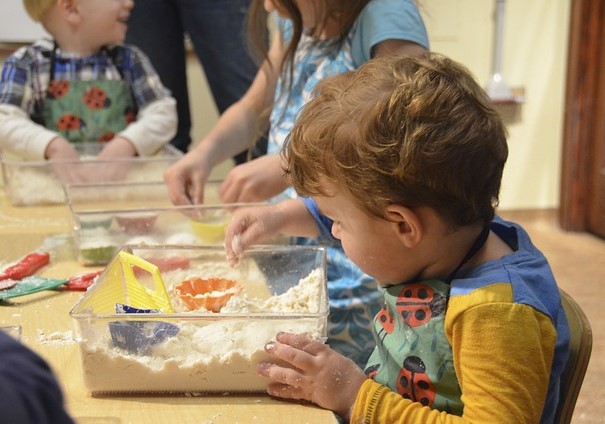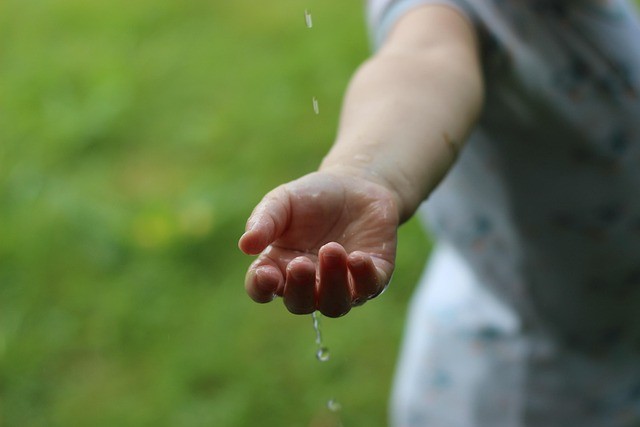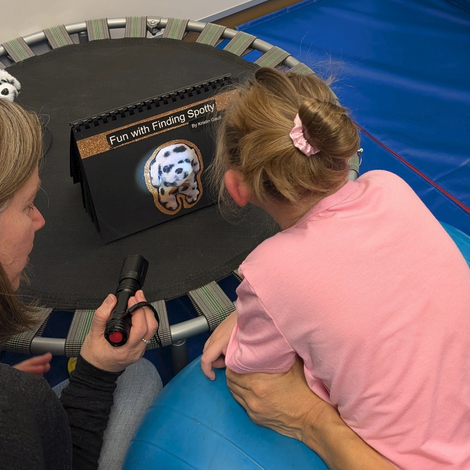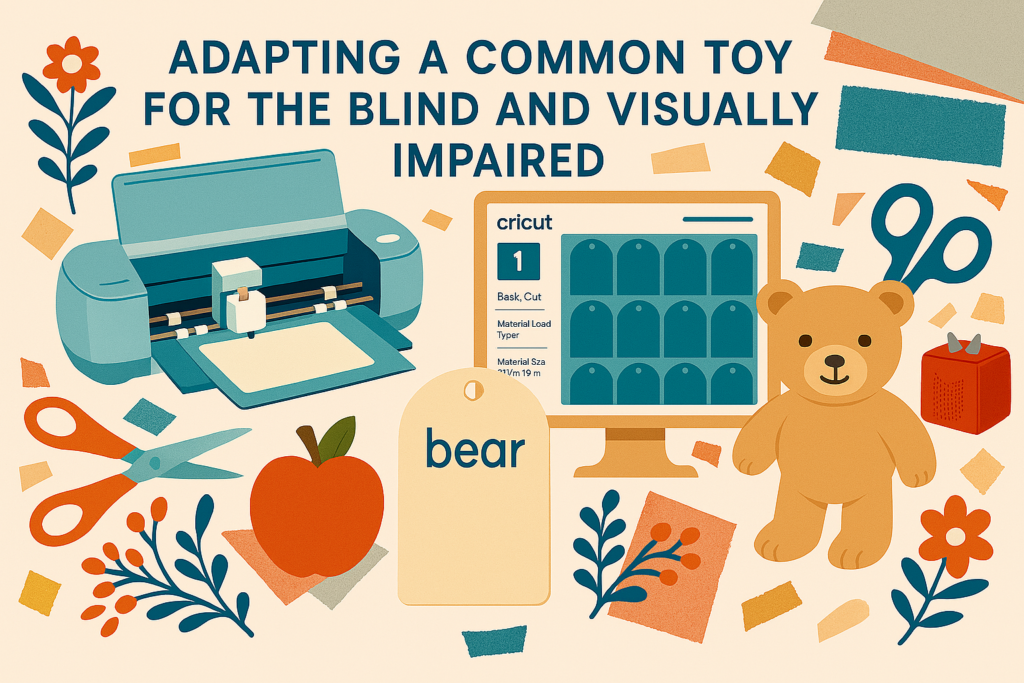To solidify the understanding of how the thalamus works when building neural pathways, I like to refer to a colleague’s example that helped fortify my comprehension. Think of a basketball. You likely have an image of a basketball, maybe you recall what the leather feels and smells like, and you may also recall what it sounds like when it bounces. You are using a “whole-body sensory rich” experience to create a basketball memory. You use this memory when you come across other kinds of balls. You tap into this memory when you come across other things that are round, or leather, or bouncy. Your brain uses this memory to help you make sense of your world in numerous ways.
Exposing a student with CVI (Cortical/Cerebral vision impairment) to this type of sensory rich experience is a creative and versatile process. Using our basketball example, talk about the concept of the ball being round and being orange. Show an orange (the fruit) to a student and tie in those two characteristics. Now you have a chance to talk about size, squishiness, texture, smell. You can peel the orange and get a stronger smell, then go into taste. You can bring in the concept of peel and then introduce a banana. There are virtually unlimited options to continue building neural pathways. And all of these pathways result in memories the student will use to connect more fully to their world around them.
Another good example of whole-body/sensory rich learning is when a baby is learning to eat on their own. This process is messy and involved. I like to think the messier the better because the baby is getting all that sensory input being processed through the thalamus and then onto the rest of the brain. Textures, smells, tastes, sounds, sight… The more sensory rich experience, the more the baby is getting the “whole body experience”.

The challenge with our students with CVI is determining how much, and what type, of sensory information they can process at any particular time. As previously mentioned, it is vital each child has completed an assessment prior to beginning to work together. I like to do a Learning Media Assessment combined with the Sensory Balance Approach by Dr. Roman-Lantzy and Matt Tietjen to show me how the student learns best, and in what environment. This assessment will help identify the primary modality in which the student learns, along with the second modality, and then the third. The senses we focus on for this are auditory, tactile, and visual. It is important to reassess throughout the year as these preferences can change, especially when there is targeted intervention. Once you know the main learning modality preference of a student, you need to figure out how and when to integrate the other less preferred modalities.
Let’s use the basketball example for a student who demonstrates little functional use of vision or other sensory pathways, and therefore needs to focus on one sensory modality at a time. Since the visual sense is often the most challenging and takes the most energy, start with vision first when the child is most alert and has the most energy to engage. Start by showing the child the basketball against a black background with a flashlight shining on the ball. This incorporates both light and movement to help give them support while focusing on the visual sense. Once the child is able to see the basketball, you know the information passed from the thalamus onto the visual cortex. Repeating this exercise will strengthen this new neural pathway and the child will begin to learn the concept of a basketball.

Once the visual part has been addressed, then move onto the tactile modality and give them time to feel and explore the ball. Most likely they will not be looking at the ball during this time as the thalamus is taking in the tactile input. From this you can move onto the auditory and bounce the ball so the child can hear what it sounds like. It may take many exposures of this same activity for the child to process, but those neural pathways are being solidified. When you feel the child is ready, start combining the sensory modalities. You may even see the child do this on their own. For example, if they are used to the tactile feel, they may start looking at the ball while they are holding it.
The Sensory Balance Approach has been very helpful in this area. Depending on the activity and the environment, the child may show different preferences with using their auditory, tactile, or visual senses. A child may be more able to visually fixate on objects shown to them in a quiet environment where the thalamus is able to take in the visual information without distraction from competing noises. The child may be able to complete an activity in a quiet environment but not when the surroundings are loud or busy. When building a CVI schedule, it is important to align the teaching strategies with the child’s learning environmental preferences. This approach identifies when it’s best to complete certain activities and the most accessible learning environment in which to do them.
The VistaQuest BaseKit includes a wide range of deliberately different materials. This wide variety provides endless options of how to build new concepts and neural pathways. Each activity addresses multiple sensory areas and gives examples of how to address each of these areas to create greater conceptual understanding of the objects. While not all resources meet the needs of each individual, the ultimate goal for these tools is to build multi-sensory experiences for the child to better understand their world.
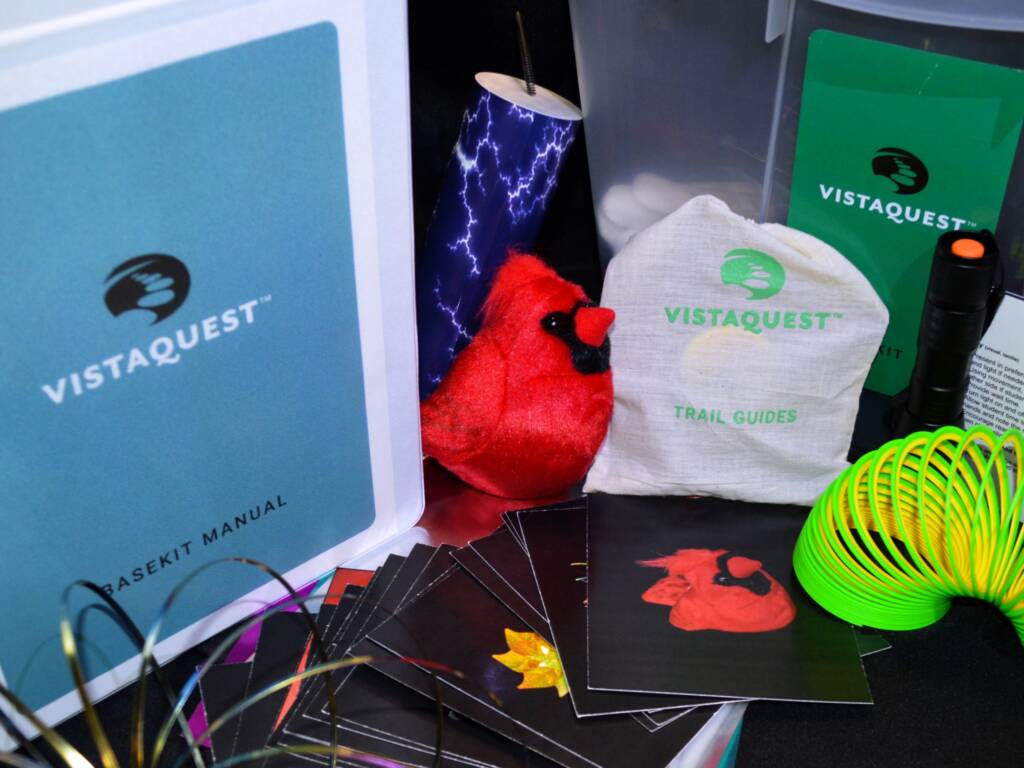
Please note: Paths to Literacy does not sell resources or materials. Information about third party providers, products, and services does not constitute an endorsement or recommendation by Perkins School for the Blind. It is the user’s responsibility to verify and investigate providers, products, and services. References to or information regarding commercial products, information, services, manufacturer, or company do not constitute endorsement or recommendation by Perkins or TSBVI.

